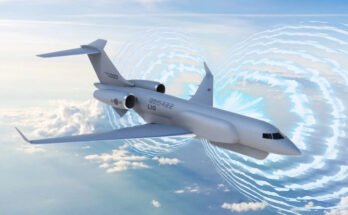By Matthew Beres, Airborne Retrofit & Modernization Analyst, Forecast International.
You’ve heard it before, a bit of a broken record – often highlighted along with the Rafale multirole fighter roller-coaster ride. India’s highest risk defense concern is a two-front war with Pakistan and China. (For the skeptics, we’re not talking about whether it will happen, but about if it does.) The Himalayas offer a natural protective border, offering Myanmar and Pakistan as the only legitimate ground attack routes, which in themselves offer little advantage for a severely stretched Chinese logistics support line. A naval attack would also offer little advantage on the home turf of the Indian naval forces.
Air forces offer the greatest advantage for either side to quickly target and destroy objectives that will neutralize opposing defensive and/or offensive capabilities. In this competition, India is greatly outmatched. Pakistan has up to 400 fighters, while China has around 1,000 – together more than twice the capacity of India’s 34 operational squadrons of around 600 fighters. All players are on an equal playing field in terms of an operationally deficient inventory, but as China develops its fighter production standards and increases factory-new output rates, air superiority will turn even more in its favor.
India is retiring its entire fleet of MiG-27s by 2020 and, although it has pushed its MiG-21 fleet to a 2021-2025 retirement, the aircraft’s availability after 2020 may be severely limited – it’s already shrinking. The nation’s Sukhoi T-50 order dropped from 166 to 60-65 aircraft, and the Rafale order fell from 126 to 36. If the deal is finalized, the first Rafales won’t be delivered for at least three to four years, and the T-50s, even if delivered within 36 months of a final contract, are less than half the expected number of aircraft. HAL’s Tejas Light Combat Aircraft orders have been pushed, despite clear design flaws, to 120 aircraft. The Indian Air Force agreed to induct 40 Tejas with shortfalls in meeting engine thrust, aircraft weight, fuel capacity, and pilot protection parameters. Optimistically but less realistically, it will be between 2017 and 2018 before the first quality Mk Is are ready, and Mk IIs will be not available until 2024-2025 at the earliest.
India will most likely not reach its goal of 42 operational squadrons post-2020, and by the end of the decade the number may dip down as low as 30. To mitigate this, India is currently pushing through a major upgrade initiative as part of a greater effort to modernize its entire military and keep fighter strength at a level strong enough to defend the nation against the dreaded two-front war.
A key piece of this effort is the modernization of India’s dwindling Jaguar inventory. The aircraft is definitely showing its age, and most of its operators have phased out the fighter in favor of newer aircraft. The U.K. has replaced its Jaguars with Eurofighter Typhoons, France has procured new Rafales, and Oman just recently retired the aircraft. Nevertheless, it is an important fighter for the IAF in a time of desperate fighter need. Not only is it an effective fighter, but until India completes nuclear strike upgrades for its Su-30MKIs, the Jaguar will remain its only nuclear strike aircraft.
Here’s how the new generation of Jaguars will look:
F-125IN Engine
Rolls-Royce offered its Adour Mk 821 engine, but pulled out of the race, leaving Honeywell as the sole bidder. Proponents of the F-125IN argue that a significantly higher 43.8 kN, compared to the 32.5 kN of the Adour Mk 811, is critical, as Jaguars will need to outpace enemy fighters in the course of missions into enemy territory.
DARIN III
Concurrent with the new-build production of its entire Jaguar fleet, India upgraded all but 68 ISs to meet the DARIN II standard. In early 2010, India placed an order with HAL for the upgrade of the remaining unmodified Jaguar ISs to a further-advanced DARIN III standard. Even after the DARIN III program is concluded, remaining Jaguars will most likely need further electronic upgrades to remain airborne and competitive through 2034.
Harpoon Block II
The Harpoons will give added all-weather, over-the-horizon strike capability to India’s maritime Jaguar IMs. The Harpoon was fired for the first time in May 2015 by an IAF jet during testing against an Arabian Sea target.
ASRAAM
In 2014, the IAF signed a GBP250 million contract for the supply of Advanced Short-Range Air-to-Air Missiles (ASRAAMs) to the IAF’s fleet of Jaguar aircraft. The IAF will call it the New Generation Close Combat Missile (NGCCM).
Cluster Bomb Unit-105 (CBU-105)
The addition of GPS and tail guidance fins has made the original unguided CBU-97 an accurate PGM that can destroy SAM launchers and radars and disable entire armored divisions. The CBU-105 is guaranteed to explode after release or self-destruct once it hits ground, thus reducing civilian casualties. Jaguars can carry 4-6 of the bombs, and they can also be deployed on the Rafale. The IAF purchased 512 units, and may order an additional 2,000+.
Just as the imposing and byzantine Indian bureaucracy has drawn out new fighter procurements, upgrades to the Jaguar have seen serious delays. Electronics and propulsion upgrades have progressed, but an engine replacement contract has been a thorn in the side of the comprehensive upgrade program for years. A final agreement has yet to be negotiated with Honeywell because according to Indian procurement protocol, there must be more than one bidder in the process.
Despite this hurdle, the delay in deliveries of new operationally sound fighter aircraft and the disproportionate Pakistani-Chinese fighter capabilities will only help to finalize an engine contract, expedite current upgrades, and spur future modifications that will carry the aircraft through 2034.
Forecast International’s Airborne Retrofit & Modernization Forecast provides operators in the military and commercial aviation sectors with the information they need to maximize their current investments rather than expand their fleets, a trend that is opening up multiple opportunities for the expansion of retrofit and modernization programs. It offers a one-stop service for tracking the status of commercial and military R&M programs in progress worldwide, and pinpoints key developments in the aviation industry that will impact the market in the future.
For 50 years, Forecast International intelligence reports have been the aerospace and defense industry standard for accurate research, analysis, and projections. Our experienced analysts compile, evaluate, and present accurate data for decision makers. FI's market research reports offer concise analysis of individual programs and identify market opportunities. Each report includes a program overview, detailed statistics, recent developments and a competitive analysis, culminating in production forecasts spanning 10 or 15 years. Let our market intelligence reports be a key part of reducing uncertainties and mastering your specific market and its growth potential. Find out more at www.forecastinternational.com



